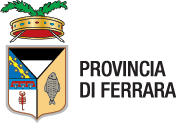National Archaeological Museum
After it was submerged by the water of the Po Delta, it became just a legendary name for centuries, until, at the beginning of the 20th century, the first necropolises were brought to light again by land reclamation works. Archaeological excavations have since unearthed of thousands of graves. In the second half of the 20th century the site of the built-up area was identified. The museum conserves various types of objects, many of them of excellent artistic quality. The abundance of sets of objects for symposium of Athenian origin bears witness to the city’s close cultural links with Greece. In fact, the Greeks counted the inhabitants of Spina among their fellow citizens. In the port of Spina, an important trading centre, goods from all over the known world, from northern Europe to the coast of Africa, used to arrive and a considerable wealth spread among its inhabitants. Objects are divided by sets, that is there are grouped together according to the burial grounds they came from. Particularly fascinating are the large Attic symposium vases upon which are depicted scenes of daily life, mythological scenes, or scenes depicting the Trojan war. Alongside these richly decorated objects are others for more ordinary use, and other objects, such as candelabras, tripods, stands, mostly in bronze, were made by the Etruscans.
SALA DEGLI ORI The Hall of Gold Jewellery
It is a fitting complement to the exhibition of grave furniture from the Spina necropolis. The refined, innovative exhibition setting was developed by the Emilia-Romagna Archaeological Heritage Bureau with the technical assistance of jewellers Bulgari.
The goldsmith workshops of Spina, mainly dating from the end of the 5th century BC, testify to a period of generalized affluence in this Etruscan port. They also demonstrate the masterful craftsmanship of its goldsmiths. Gold, silver, amber, semi-precious stones and vitreous glass paste were the materials most prevalently used. In the darkness of the tombs they reflected the power of their owners and the pomp and ceremony that surrounded their use in everyday ritual or on special occasions.
SPOTLIGHT ON THE MUSEUM: The layout on the ground floor gives visitors the opportunity of knowing more about the ancient inhabited areas of Valle Trebba and Valle Pega. Then, on the noble floor, it is possible to discover finds from the necropolis. The “dead town” is now compared to the “living town”, a multicultural and prosperous port on the Adriatic coast.
The setting of the museum shows materials found from 1960s to 1980s. They have been used for the exhibition in 1993, and then stored for a long time. The brand new rooms are organized in a multi-sensorial route, set by Vps- Roma, along with Maurizio Di Paulo.
In the first room, evocative music from the Mediterranean area accompanies some images of vascular painting. Here, architecture, society and culture are on display.
The second room, with the famous frescoes by Garofalo and Dosso Dossi, is dedicated to myth and religion, while the third one – decorated with Sybyls and Prophets – is concerned on the history of writing. The fourth room – “della Cappelletta” – houses one of the two virtual libraries, and it links the bottom floor with the top. A didactic lounge completes the setting.
Related documents
Opening
9.30-17.00. (Ticket office closes at 16.30). Closed on Monday.
Closed December 25th, January 1st.
Closing days
- Monday
Price
Full 6,00 euro.
Red. 2,00 euro (visitors aged 18 - 25).
Garden: 1,00 euro
FREE ENTRANCE for the owners of MYFE tourist card
Free entrance 1st Sunday of each month.
Free
- Up to age 18
- Disabled persons with one accompanying person
- Tourist guides
- Journalists
Contacts
 0532 741270
0532 741270
How to get here
On foot: 30 minutes from the Este Castle; bus: n. 2 from the train station.
Accessible to people with disabilities.








